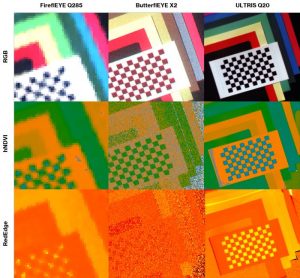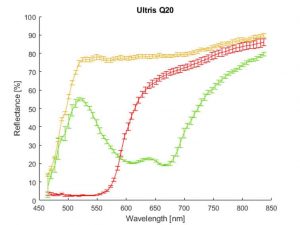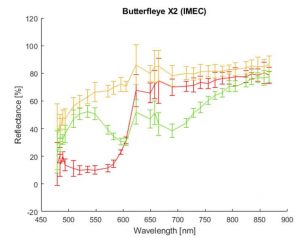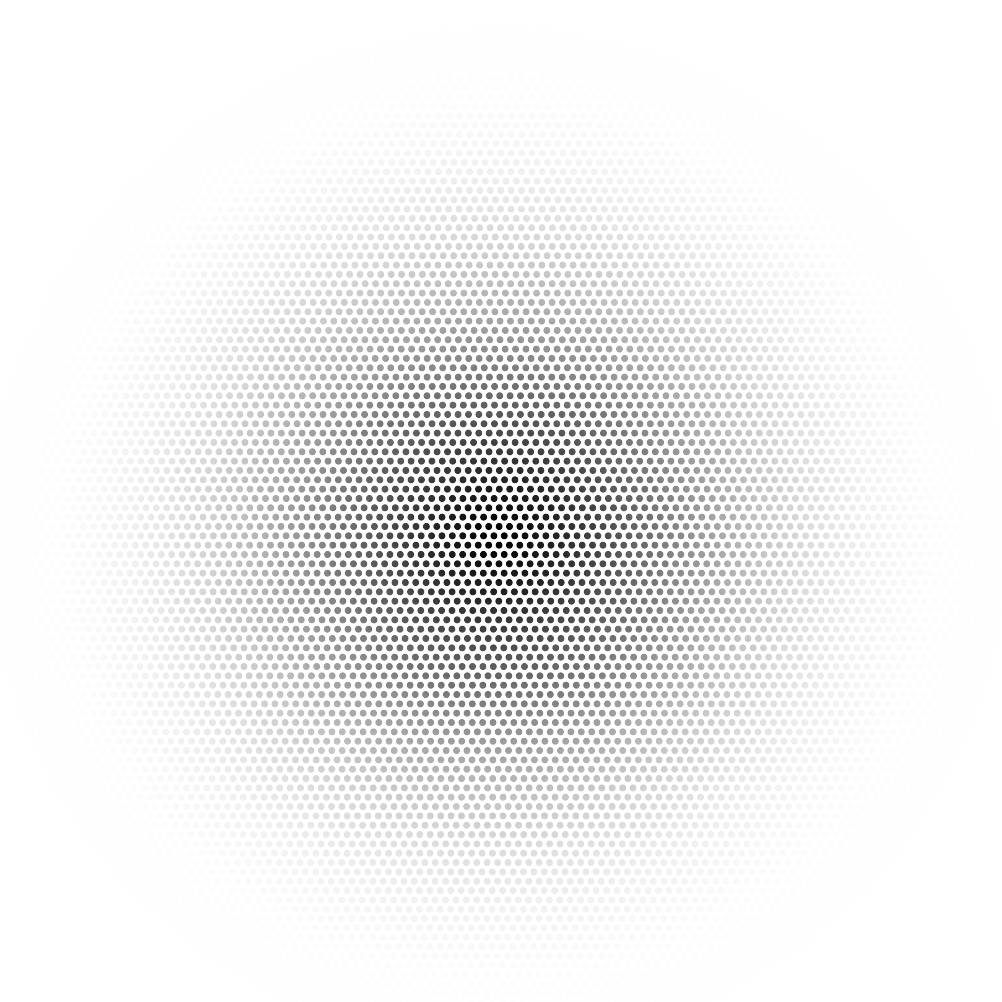The new hyperspectral video camera ULTRIS is based on light field technology and comes with high data quality, flexibility and speed.
The FireflEYE Q285 was at the time of its launch the first hyperspectral camera that could acquire a complete hyperspectral data cube (x, y, λ) with one single image shot. The prism-based sensor technology offered light efficiency of up to 70 %. With 125 spectral channels (450 nm to 950 nm) and an image size of 50×50 px, 2500 spectra were recorded simultaneously. With just 50×50 px it is difficult to resolve spatial structures in the image. Therefore, a second image sensor with only one band (panchromatic) was integrated into the camera, imaging the same view with 1000×1000 px.
With this additional information the users can perform a pansharpening of the spectral data that transforms the final data cubes to a maximum size of 1000x1000x125.
Responding to customers’ demand for even higher non-interpolated resolution, Cubert expanded its portfolio with the multispectral ButterflEYE camera that was based on filter-on-chip technology. The combined model ButterflEYE X2 provides an image resolution of 512×272 px. The number of spectral channels however decreased to 16 or 25 depending on sensor type.
During an EPIC (European Photonics Industry Consortium) webinar on Hyperspectral Imaging Cubert CEO Dr. René Heine gave insight on the new hyperspectral light field camera ULTRIS 20, the technology and its different application fields.
Fundamentally New Snapshot Technology
Today, the new Cubert ULTRIS breaks new ground as the first HSI camera that is based on light field technology. The camera features an Ultra-HD CMOS sensor with 20 MP, which makes it to the imaging spectrometer with the world-wide highest resolution. During image acquisition the object is recorded with a multitude of images, each with its own optical bandpass filter with different center wavelength. This is made possible by combining a continuously variable bandpass filter with a lenslet array. The camera provides a native image resolution of 400×400 px with 100 spectral channels, continuously covering the wavelength range from 450 nm to 850 nm. This means that the previously unheard number of 160,000 spectra is acquired simultaneously. The 12-bit sensor of the camera makes it possible to detect minute intensity differences in the spectral content while keeping the noise level very low. The dual GigE camera interface guarantees an image frame rate of 6 Hz.
Looking at the distribution of the spectral channels across their respective wavelength ranges between the three cameras, the improvements become obvious. Due to its prism-based optics the Q285 has a continuous, but non-linear distribution of the channels. The X2 camera suffers additionally from the fact that the distance and position of the spectral channels cannot accurately be determined because of the complicated production process of the filter-on-chips. The channels of the ULTRIS on the other hand are spaced equidistantly with a bandwidth (FWHM) of two percent of the center wavelength.
Cameras in Comparison

Image comparison of the three hyperspectral cameras FireflEYE Q285, ButterflEYE X2 (dual filter-on-chip) und ULTRIS Q20. For each camera an RGB image (true color) and two vegetation indices (hNDVI and RedEdge) are shown.
The three cameras (ButterflEYE X2, FireflEYE Q285 and ULTRIS Q20) were installed in the same set-up for a comparison. The exposure time was optimized with the help of a white reference to derive the maximum dynamics. As illumination a stabilized tungsten light source (50 W) was used with exposure times of 10 ms (FireflEYE Q285), 16 ms (ULTRIS Q20) and 120 ms (ButterflEYE X2). The reflectance properties of the test samples were calculated by subtracting the dark current image from the measurement image and subsequently dividing it by the image of a calibrated 95 % white reference (Zenith Lite). The dark current measurement and the white reference were averaged 20 times to achieve a good noise reduction.
The measurement, however, was acquired without any averaging and post-processing in order to faithfully represent the inherent noise. The data are presented in their original form without averaging, sharpening or smoothing to show the true spectral quality of each sensor. Image 1 shows quantities derived from the hyperspectral data cubes. The first line shows typical RGB representations (true color), the two bottom lines show typical indices that are used for vegetation analysis. Each pixel of the different images represents one spectral curve of the respective sensors.
In the case of the FireflEYE Q285 the low spatial resolution is obvious. The color representation on the other hand is very clear, which is also confirmed by the noise-free images of the vegetation indices. The filter-on-chip-based camera X2 has a higher spatial resolution but exhibits the typical high noise level of this sensor. Especially the vegetation indices can only be used after intensive post-processing. The new ULTRIS combines high spatial resolution with low noise levels. Both the image quality and the spectral quality are excellent. The image noise is on a comparable level with the FireflEYE Q285.



Comparison of the spectral quality of the three Hyperspectral Imaging cameras. For each camera the spectra of the red, green and yellow samples are shown along with the respective noise indicating standard deviation.
The graphs show the spectral signature of three differently colored paper samples for each camera. The spectra of all pixels in a pre-defined area with homogenous color were averaged. Because the standard deviation represents the noise equivalent of the sensors it is used as error bars for each channel. The result shows clearly that the new ULTRIS can easily level with the spectral quality of the FireflEYE even though the ULTRIS has a tremendously higher spatial resolution.
